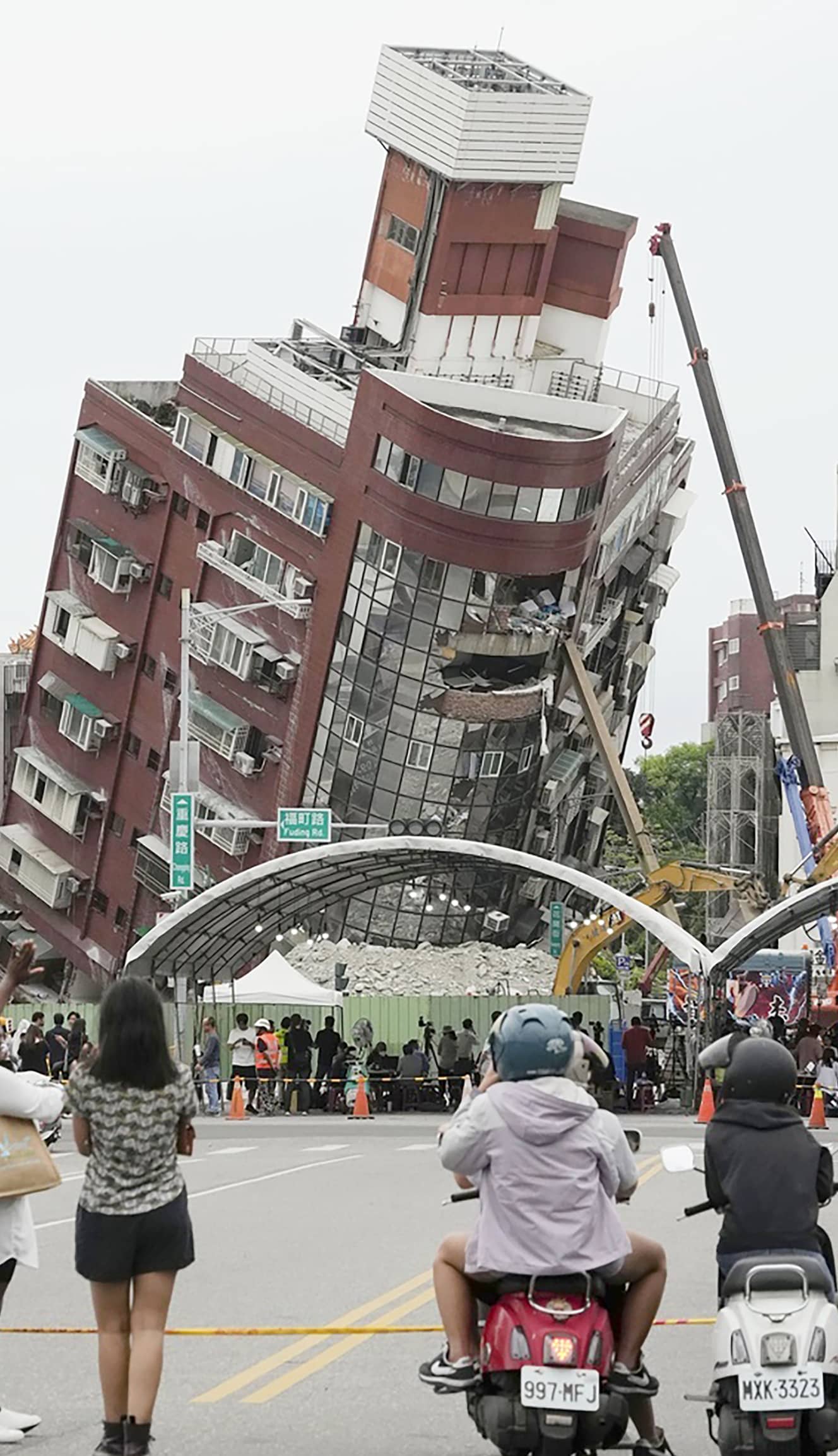Be careful in May! 3 Areas in Japan to Watch for Catastrophic Disasters” with Frequent Uncanny Shakes
What does the M7+ Taiwan Earthquake Mean? Large earthquakes have been occurring frequently in various parts of the Japanese archipelago. The Noto Peninsula earthquake killed more than 200 people, and a series of tremors in Chiba, Japan. ...... In addition, in April, a major earthquake hit Taiwan, killing 13 people. Experts explain the background to this string of earthquakes and sound the alarm.

The energy that causes earthquakes is currently accumulating in many parts of Japan. For example, the Nankai Trough earthquake, which is said to kill hundreds of thousands of people, occurs about every 100 years. The last one occurred in 1946 (Showa Nankai Earthquake), and about 80 years have passed since then, and the Japanese archipelago is beginning to scream as strain builds up before a major earthquake occurs.
Dr. Yoshinobu Tsuji, former associate professor at the Seismological Research Institute of the University of Tokyo and visiting researcher at the Fukada Geological Research Institute, sounds the alarm.
Since the beginning of this year, there have been a number of eerie tremors, including the 7.6 magnitude Noto Peninsula earthquake in January (see figure), a series of slow-slip earthquakes off the coast of southern and eastern Chiba in February and March, and a major earthquake exceeding M7 in April that struck Taiwan and hit the island on April 10, 2011. As of April 10, 13 people were confirmed dead and more than 1,000 injured. Professor Shinji Toda of Tohoku University’s International Research Institute of Disaster Science explains the background of the Taiwan earthquake.
The earthquake occurred where the Philippine Sea Plate and the Eurasian Plate collide. It was a reverse fault earthquake, in which faults shift longitudinally, and the shaking became stronger because there was a fault directly under it.
What was the significance of the Taiwan earthquake? Manabu Takahashi, an expert on natural disasters and a specially-appointed professor at Ritsumeikan University’s Center for the Study of Pacific Rim Civilizations, explains.
What is influencing this is the movement of the Pacific Plate to the east of the Japanese archipelago. Since the Great East Japan Earthquake in March 2011, the plates to the west have been under pressure. The North American plate and the Philippine Sea plate, pushed by the Pacific plate, are exerting pressure on the Eurasian plate further to the west. Although the Noto Peninsula and Taiwan earthquakes are far apart in location, the Pacific Plate is the remote cause of both earthquakes.
Seismic activity is increasing in and around Japan due to the Pacific Plate. There are three areas where we should be on the lookout for a major disaster in the future. Two of these areas, near Aomori and Chiba, are mentioned by the aforementioned Mr. Toji.
There is still great strain around the epicenter of the Great East Japan Earthquake,” he said. The northern part of Aomori Prefecture in the north and the southern part of Chiba Prefecture in the south. In particular, shaking in southern Chiba could stimulate the Sagami Trough, which could trigger an earthquake directly under the Tokyo metropolitan area, so we need to be careful. In fact, the Jogan Sanriku earthquake (estimated magnitude 8.3 or greater) that occurred in the Tohoku region in 869 during the Heian period (794-1185) was followed nine years later by the Genkei earthquake (estimated magnitude 7.0 or greater) in 878 in the southern part of the present Kanto region, which caused extensive damage. There is a danger of a huge earthquake occurring in the Tokyo metropolitan area for some time to come.”
The third area to be on the lookout for is Gifu.
The fault zone in Gifu, which was stimulated by the Noto Peninsula earthquake, may become active and cause major tremors. If a major earthquake occurs in Gifu, the damage will not be limited to the prefecture. In the 1891 Nobi earthquake (M8.0) in the Meiji era, nearly 100% of the buildings near present-day Gifu City and Ichinomiya City in Aichi Prefecture collapsed. Nagoya and other areas along the Tokaido Highway will be affected,” said Takahashi.
Large earthquakes are likely to continue to occur in the future. The time to be careful is from the thawing of the snow to early summer in May this year.
Around April or May of last year, Japan experienced many tremors of intensity 4 class. We do not know the cause, but it seems that earthquakes do not occur randomly in various places, and that there are certain times of the year when they are relatively more likely to occur. Looking at the way earthquakes occur, there are quiet periods and active periods,” said Toda.
It goes without saying that we must always remain vigilant. Takahashi also urges caution.
According to my statistics, an earthquake of M7 or greater occurs in Japan about three times every five years. The recent spate of major tremors is unusual: 37 years after the 1896 Meiji Sanriku earthquake (M8.5), which killed more than 20,000 people, there was the 1933 Showa Sanriku earthquake (M8.1). The two are not unrelated. The Showa Sanriku Earthquake is an aftershock of the Meiji Sanriku Earthquake. The seismic activity that caused the Great East Japan Earthquake has not ended. It is still affecting the Japanese archipelago.”
The day is near when the strain that has begun to scream throughout Japan will explode all at once.


From the April 26, 2024 issue of FRIDAY
PHOTO: Kyodo News Agency Jiji Press Pingtung Fire Department/AP/Afro
